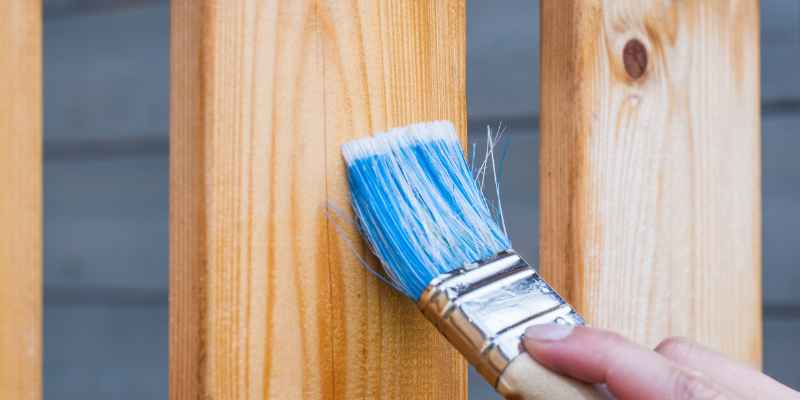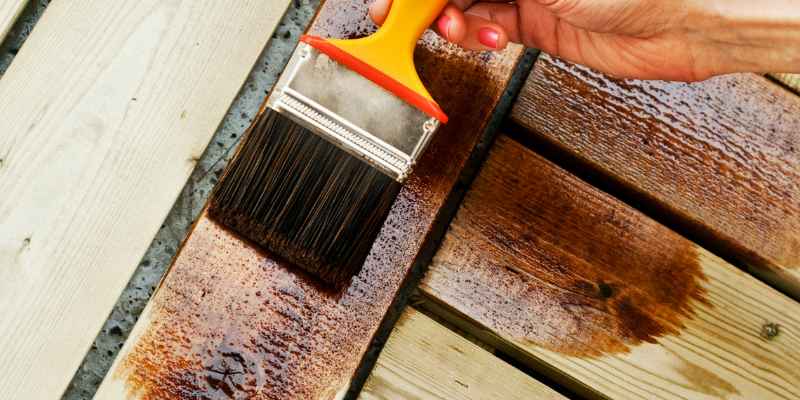Yes, you can apply polyurethane over varnish to provide an additional layer of protection and enhance the appearance of the finish. Polyurethane is a durable and long-lasting topcoat that can be used on various surfaces, including wood, to add a glossy or satin finish.
By applying polyurethane over varnish, you can increase the resistance to moisture, chemicals, and wear and tear, making it an ideal option for furniture, cabinets, or other wood projects. Coating varnish with polyurethane can also help to revive dull or worn-out finishes and extend the life of the surface.
It is important to properly prepare the surface, sanding the varnish lightly, before applying the polyurethane to ensure good adhesion.
Understanding Polyurethane
Polyurethane can be applied over varnish to enhance durability and provide long-lasting protection for your wood surfaces. It is a practical solution for upgrading the finish of your furniture or flooring without the need for extensive sanding and stripping processes.
Polyurethane is a versatile and durable coating that is commonly used to protect various surfaces, including wood. Its exceptional properties make it an excellent choice for adding a layer of protection over varnish. In this article, we will delve into the world of polyurethane, exploring its properties, different types, and the benefits it offers.
Properties Of Polyurethane
Polyurethane boasts several remarkable properties that make it an ideal choice for protecting surfaces. Here are some key characteristics of polyurethane:
- Durability: Polyurethane forms a hard and robust surface that withstands wear and tear, ensuring the longevity of the coated material.
- Resistance: This coating is resistant to moisture, chemicals, and UV rays, providing an added layer of protection against various environmental factors.
- Flexibility: Polyurethane remains flexible even after it cures, allowing it to expand and contract with temperature and humidity changes, preventing cracks or peeling.
- Enhanced Appearance: The transparent nature of polyurethane enhances the natural beauty of the surface, providing a glossy or satin finish.
Types Of Polyurethane
Polyurethane is available in different forms to suit various applications. Here are the common types of polyurethane coatings:
| Type | Description |
|---|---|
| Oil-Based Polyurethane | A traditional option offering a durable, amber-colored finish. It requires longer drying times and emits strong fumes during application. |
| Water-Based Polyurethane | A popular choice for its quick drying time and low odor. It dries clear and produces minimal discoloration, making it ideal for light-colored woods. |
| Alkyd-Based Polyurethane | Combining the benefits of oil-based and water-based polyurethane, it offers durability, quick drying time, and a low level of fumes. |
Benefits Of Using Polyurethane
Using polyurethane as a topcoat over varnish brings numerous benefits. Here are a few advantages to consider:
- Enhanced Protection: Applying polyurethane over varnish provides an additional layer of protection, safeguarding the surface from scratches, stains, and moisture.
- Extended Lifespan: The durable nature of polyurethane helps prolong the life of the underlying varnish and the surface it covers, reducing the need for frequent maintenance or refinishing.
- Ease of Application: Polyurethane is easy to apply and can be brushed, sprayed, or rolled onto the surface, making it accessible to DIY enthusiasts.
- Wide Range of Finishes: With options ranging from glossy to satin, polyurethane allows you to achieve your desired aesthetic outcome, enhancing the natural beauty of the wood.
In conclusion, understanding polyurethane and its properties, types, and benefits is crucial when considering applying it over varnish. Whether you seek to protect your wooden furniture or enhance the appearance of your woodwork, polyurethane offers a reliable and long-lasting solution. By choosing the right type and properly applying polyurethane, you can enjoy the added durability and beauty it brings to your beloved wooden surfaces.

Exploring Varnish
Discover the compatibility of polyurethane over varnish and explore the seamless way to enhance your furniture with a protective and glossy finish.
Characteristics Of Varnish
Varnish is a versatile and durable finish that has been used for centuries to protect and enhance the beauty of wood surfaces. It is a clear, glossy coating that forms a hard, protective layer over the wood. Varnish has unique characteristics that make it a popular choice for finishing projects:
- Water resistance: Varnish is highly resistant to moisture, making it ideal for use on outdoor furniture, doors, and other wood surfaces that are exposed to the elements.
- Durability: Varnish creates a tough and hard-wearing finish that can withstand heavy use and protect the wood from scratches, stains, and other damage.
- Enhanced color and depth: Varnish enriches the natural color and grain of the wood, giving it a beautiful, deep luster.
- Easy application: Varnish is easy to apply with a brush, roller, or sprayer, adhering well to the surface and drying to a smooth, glossy finish.
- Longevity: Varnish offers excellent UV protection, preventing the wood from fading or yellowing over time.
Different Types Of Varnish
There are various types of varnish available, each with its own unique properties and suitability for different applications:
| Type of Varnish | Features |
|---|---|
| Polyurethane varnish | Polyurethane varnish is a popular choice due to its durability, water resistance, and ability to withstand heavy use. It is available in both oil-based and water-based formulas. |
| Spar varnish | Spar varnish is specifically designed for outdoor use and offers superior protection against moisture, UV rays, and temperature fluctuations. |
| Marine varnish | Marine varnish is the most rugged and moisture-resistant type of varnish. It is commonly used on boats, decks, and other marine applications. |
| Water-based varnish | Water-based varnish is a low-odor and environmentally-friendly option. It dries faster than oil-based varnish and offers good durability. |
Advantages Of Using Varnish
Varnish offers several advantages that make it a preferred choice for wood finishing:
- Protection: Varnish forms a protective barrier against water, stains, scratches, and other damage, extending the lifespan of wood surfaces.
- Enhanced beauty: Varnish enhances the natural beauty of wood, bringing out the richness of its color and grain pattern.
- Easy maintenance: Varnished surfaces are easy to clean and maintain, requiring only regular dusting and occasional reapplication.
- Versatility: Varnish can be used on a wide range of wood surfaces, including furniture, floors, doors, cabinets, and more.
- Long-lasting finish: With proper application and maintenance, varnish can provide a durable and long-lasting finish that stands the test of time.
The Ultimate Technique
Polyurethane can be applied over varnish, providing a durable and glossy finish that protects the underlying surface. This technique allows you to rejuvenate and enhance the appearance of your furniture or woodwork with ease.
When it comes to refinishing furniture or reviving old wood surfaces, polyurethane is a popular choice due to its durability and protective properties. But what if you already have a layer of varnish on your wood surface? Can you apply polyurethane over varnish? The answer is yes! In this post, we will guide you through the ultimate technique of applying polyurethane over varnish in three simple steps. So let’s dive in and learn the preparation, sanding, and application process for achieving a smooth and flawless finish.
Preparation and Cleaning
Before you begin the polyurethane application process, it is crucial to prepare the surface properly. Here’s a step-by-step guide for the preparation and cleaning process:
1. Start by removing any dust, dirt, or debris from the surface using a clean, lint-free cloth.
2. If there are any visible stains or grime, gently clean the surface with a mild soap and water solution.
3. After cleaning, allow the surface to dry completely. This ensures that the polyurethane adheres properly without any moisture interference.
Sanding the Surface
Next up is sanding the varnished surface, which helps the polyurethane bond effectively. Follow these steps for a smooth and even surface:
1. Begin by lightly sanding the varnished surface using a fine-grit sandpaper (around 220 grit). This helps in removing the glossy finish and creates a rough surface for the polyurethane to adhere to.
2. Ensure to sand in the direction of the wood grain, applying gentle and even pressure. Sanding against the grain may result in scratches or unevenness.
3. Once you have sanded the entire surface, wipe away any dust particles with a tack cloth. This step is crucial for achieving a flawless finish.
Applying Polyurethane over Varnish
Now that the surface is prepped and sanded, it’s time to apply the polyurethane. Follow these steps to ensure a successful application:
1. Start by stirring the can of polyurethane thoroughly to mix any settled solids and achieve a consistent texture.
2. Using a high-quality brush or foam applicator, apply a thin and even coat of polyurethane over the varnished surface. Remember to work in the direction of the wood grain to avoid any streaks.
3. Allow the first coat to dry completely as per the manufacturer’s instructions. This usually takes around 8 hours, but check the label for accurate drying time.
4. Once the first coat is dry, lightly sand the surface with a fine-grit sandpaper to remove any imperfections or bubbles. Wipe away the dust with a tack cloth.
5. Apply subsequent coats of polyurethane following the same process, ensuring each coat dries completely before applying the next one. Usually, 2-3 coats are sufficient for a durable finish.
By following this ultimate technique of preparing the surface, sanding it, and applying polyurethane in thin and even coats, you can successfully achieve a professional-looking finish over varnish. So why wait? Get ready to transform your wooden surfaces and give them a fresh, rejuvenated appearance with polyurethane.

Tips And Tricks
Polyurethane can be applied over varnish, but it requires proper preparation and technique. Ensure the surface is clean, smooth, and free of wax or oils. Sand the varnish lightly, then apply a coat of polyurethane.
Choosing The Right Products
When it comes to polyurethane over varnish, selecting the right products is crucial for optimal results. Here are a few tips to keep in mind:
- Choose a high-quality polyurethane specifically designed for use over varnish. Look for products labeled as “clear” or “self-leveling” to ensure a smooth, glossy finish.
- Consider the type of varnish you have. Oil-based varnishes typically work well with oil-based polyurethane, while water-based varnishes are compatible with water-based polyurethane. Mixing different types can lead to poor adhesion and an uneven outcome.
- Take the sheen level into account. If your varnish has a matte finish, opt for a polyurethane with a similar sheen. Similarly, choose a glossier polyurethane if your varnish has a shiny finish. This helps maintain consistency and provides the desired appearance.
Proper Application Techniques
The key to a successful polyurethane application lies in the technique used. Follow these recommendations for a flawless finish:
- Before applying polyurethane, ensure the varnish is clean, dry, and free of any dust or debris. Sanding the varnish lightly can improve adhesion.
- Use a high-quality brush or applicator pad to apply the polyurethane in thin, even coats. Overloading the brush can lead to drips and an uneven finish.
- Apply the polyurethane in the direction of the wood grain to achieve a more professional look.
- Avoid excessive brushing or multiple passes. This can disturb the varnish underneath and create streaks or bubbles.
- Allow each coat of polyurethane to dry completely before adding another layer. Follow the manufacturer’s instructions for the recommended drying time.
Common Mistakes To Avoid
To ensure a successful polyurethane application over varnish, watch out for these common mistakes:
- Avoid applying polyurethane in humid or extremely cold conditions, as these can hinder proper drying and lead to a cloudy finish.
- Steer clear of excessive sanding between coats, as this can remove the varnish and create an uneven surface.
- Do not rush the process. Applying too many coats of polyurethane in a short timeframe can cause the layers to react poorly, resulting in an uneven or cloudy finish.
- Don’t forget to stir the polyurethane before applying it. This helps ensure an even distribution of the protective agents and maintain consistent results.
Conclusion
Polyurethane can be applied over varnish to enhance its durability and provide a fresh and protective finish. By following proper preparation and application techniques, you can achieve a smooth and long-lasting result. However, it is important to note that compatibility and adhesion can vary depending on the specific products used.
It is always advisable to test a small area before proceeding with the entire project. With careful consideration and the right approach, you can successfully utilize polyurethane over varnish for a beautiful and resilient finish.


